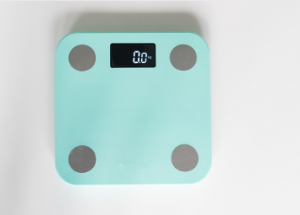How to Choose an Instrument Choice Digital Scale
When choosing the best digital scale, you should consider a few factors. Here, we’ll look at price, size, reliability, and features to help you decide which one is right for you. After you’ve reviewed the different factors, it’s time to decide! Hopefully, you’ll find an Instrument Choice digital scale that meets your needs! The next time you need to weigh yourself, read on! You’ll be glad you did!
Features
 An Instrument Choice digital scale has several benefits, including accuracy, convenience, and versatility. Some of the company’s models include the PCE-EPS 40 compact scale, which can be used for platform or package weighing. In addition, its LCD provides easy readings. Another option is the PCE-BS 300 compact table scale, which offers 0.001 g resolution and a detachable stainless steel weighing plate.
An Instrument Choice digital scale has several benefits, including accuracy, convenience, and versatility. Some of the company’s models include the PCE-EPS 40 compact scale, which can be used for platform or package weighing. In addition, its LCD provides easy readings. Another option is the PCE-BS 300 compact table scale, which offers 0.001 g resolution and a detachable stainless steel weighing plate.
Weight sensors are generally made of a metal body, also known as the flexure, that holds the sensors’ weighing elements. Foil strain gauges are then bonded to the body of the sensor. It gives weight sensors the sturdiness necessary to withstand heavy loads, yet their elasticity allows them to return to their original shape when the force is removed. In addition, weight sensors are made to be highly accurate.
The smallest increment of the weight of this scale is only 0.1g, making it extremely accurate. If you want to check the accuracy of your scale over time, you should consider using a device with tracking calibration. Tracking calibration allows you to calibrate your scale without separate calibration masses. Instrument Choice has traceable calibration masses that help you calibrate the scale every time you weigh an object. Whether you use the scale for cooking, home use, or commercial purposes, you will be able to read accurate results every time.
Price
The circuit board of the Instrument Choice digital scale controls the functions of all the components. The device is powered by a 3V coin cell battery. Four sensors are connected to the main circuit board. The device measures weight with the help of a digital display. In addition to reading weight, this device also features a thermo-hygrometer to measure temperature and humidity. Its price is relatively affordable. But be careful: there are some shortcomings to it.
Reliability
The reliability of an instrument depends on how well it measures its construct. Two basic methods are item-total reliability and split-half reliability. Both use the same scale and measure item-total reliability differently. In both cases, the test item’s reliability is based on the correlation of its scores from both halves. The reliability of a scale can be determined by comparing the item’s average score across different respondent groups.
Some studies found that the reliability of an instrument depends on the form in which responses are provided. Verbal polarity, for example, can affect a scale’s reliability. Other studies have noted that different formats have different effects on the interpretation of individual question categories. The reliability of instruments with different formats also differs among different administration conditions. Accordingly, it is essential to consider these factors when choosing an instrument.
Size
One factor that influences the choice of a digital scale is the size of the features that it must measure. For example, there are times when a microscopic evaluation is necessary to ensure the maximum absorption of sunlight. It may require a smaller instrument than the products they measure, as it may have special measuring and fixturing issues. Also, large-scale products may have special features that require very small features. It will limit the choice of the instrument.
Sensor
The Instrument Choice digital scale sensor, consists of a load cell and a transducer. Load cells measure weight by producing an electrical output signal proportional to the load. Different sensors are used to measure weight, but they all have a transducer that converts a physical phenomenon into an electrical output signal. The digital display shows the reading immediately after the object is placed on the scale. The sensors have different weight capacities, so some are more sensitive than others.
Weight sensors are generally made of a metal body, also known as the flexure, that holds the sensors’ weighing elements. Foil strain gauges are then bonded to the body of the sensor. It gives weight sensors the sturdiness necessary to withstand heavy loads, yet their elasticity allows them to return to their original shape when the force is removed. In addition, weight sensors are made to be highly accurate.
